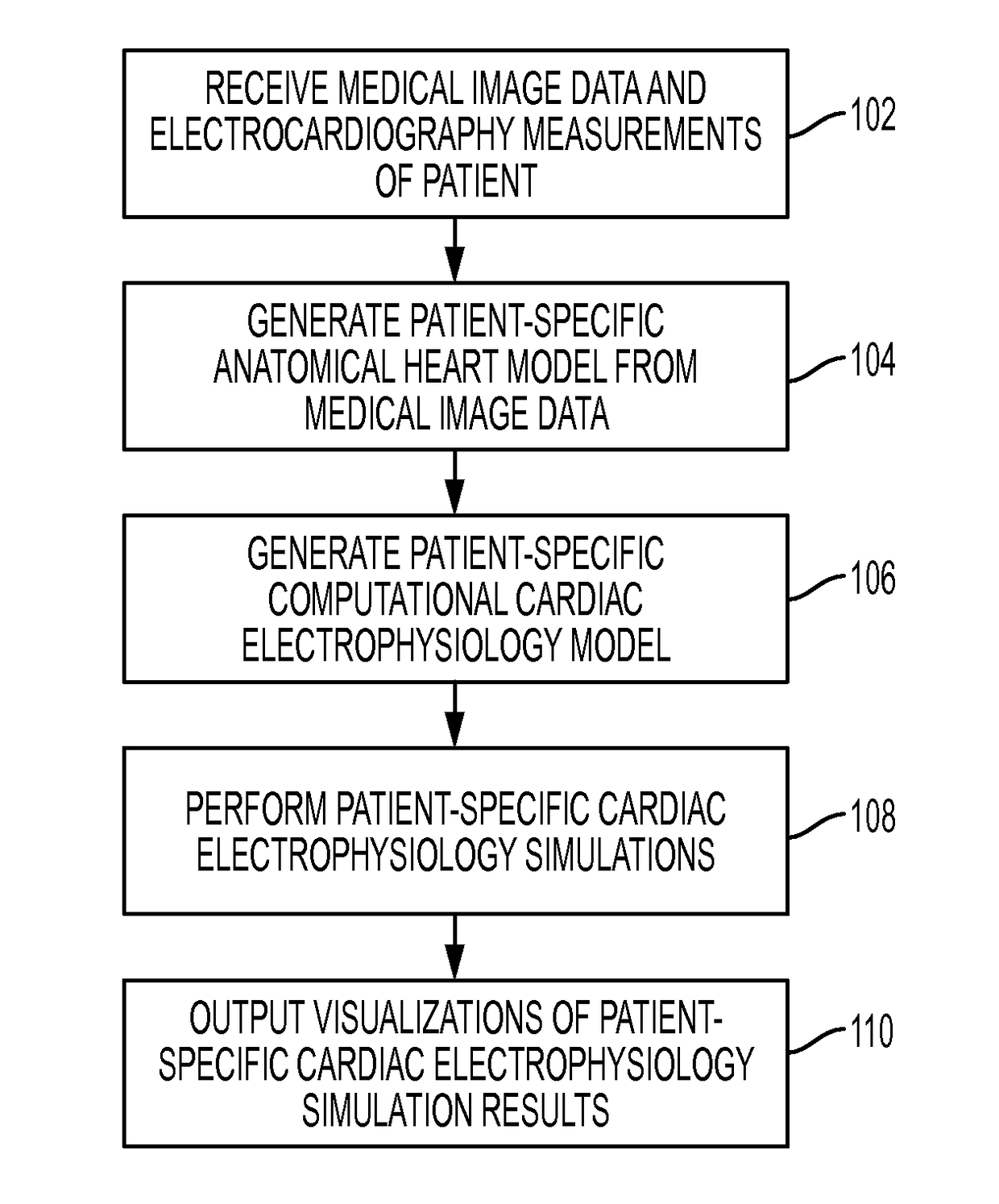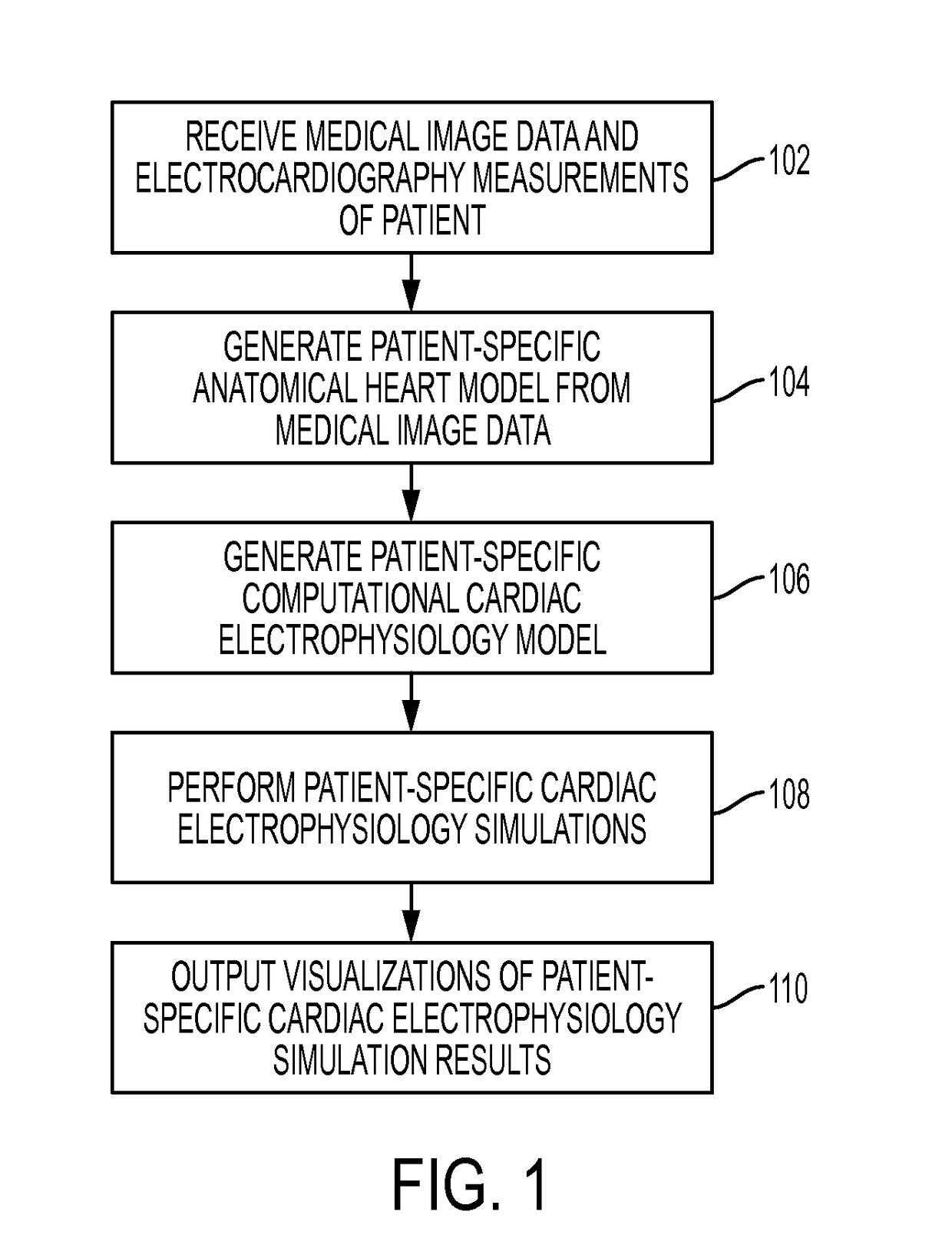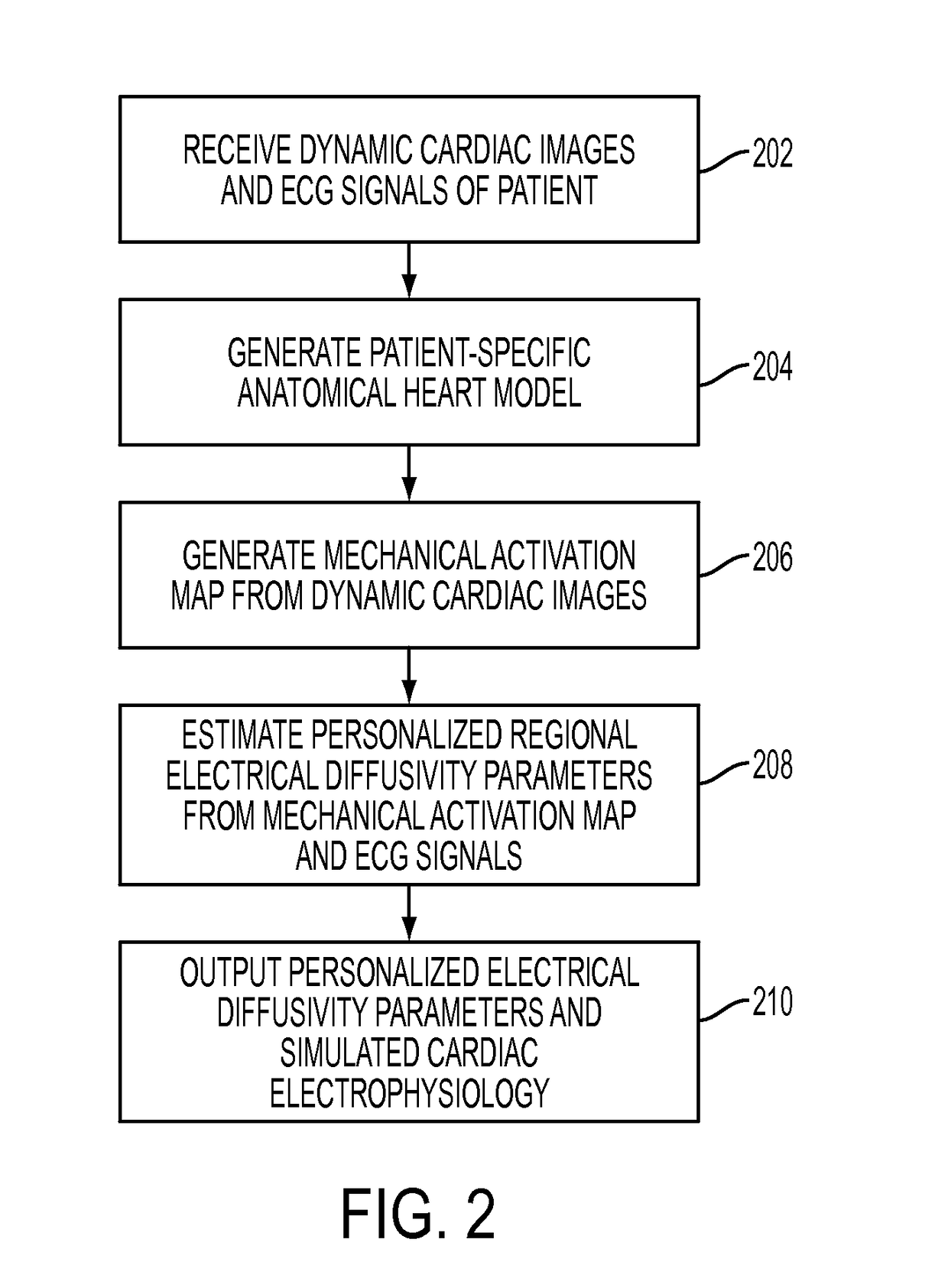System and method for characterization of electrical properties of the heart from medical images and body surface potentials
a technology of electrical properties and medical images, applied in the field of estimation, can solve problems such as cardiac arrest, heart failure, and decrease in the speed of electrical waves, and achieve the effect of improving patient selection and planning
- Summary
- Abstract
- Description
- Claims
- Application Information
AI Technical Summary
Benefits of technology
Problems solved by technology
Method used
Image
Examples
first embodiment
[0034]FIG. 2 illustrates a method of estimating patient-specific electrical properties of the heart according to the present invention. The method of FIG. 2 estimates patient-specific regional electrical properties of the heart based on medical images and measured ECG signals (e.g., 12-lead ECG) of a patient. This embodiment relies on non-invasive ECG measurements and motion information gained from clinical images. While ECG features, such as QRS duration and electrical axis, provide global information of the cardiac electrophysiology, cardiac strain maps calculated from dynamic cardiac images of the patient are used to identify regional abnormalities. Mechanical activation is computed from the strain maps to identify the location of a line of block. Then, electrical diffusivity is estimated such that the resulting simulated ECG features match the measurements while the electrical depolarization pattern corresponds to the line of block. The method of FIG. 2 can be used to perform st...
second embodiment
[0055]FIG. 7 illustrates a method of estimating patient-specific electrical properties of the heart according to the present invention. The method of FIG. 7 estimates patient-specific electrical properties of the heart based on medical images and measured body surface potentials of a patient. This embodiment combines body surface potential measurements acquired using body surface potential mapping or standard electrocardiogram, with a computational model of cardiac EP in order to visualize volumetric 3D heart potentials on the whole myocardium and quantify EP regional parameters of the heart and improve the accuracy of the patient-specific cardiac EP model. The method of FIG. 7 can be used to perform step 106 of FIG. 1 and generate a patient-specific computational cardiac EP model. Moreover, the method of FIG. 7 estimates cardiac electrical parameters of the patient that provide important information and can be employed as new physiological parameters for diagnostic and planning use...
PUM
 Login to View More
Login to View More Abstract
Description
Claims
Application Information
 Login to View More
Login to View More - R&D
- Intellectual Property
- Life Sciences
- Materials
- Tech Scout
- Unparalleled Data Quality
- Higher Quality Content
- 60% Fewer Hallucinations
Browse by: Latest US Patents, China's latest patents, Technical Efficacy Thesaurus, Application Domain, Technology Topic, Popular Technical Reports.
© 2025 PatSnap. All rights reserved.Legal|Privacy policy|Modern Slavery Act Transparency Statement|Sitemap|About US| Contact US: help@patsnap.com



